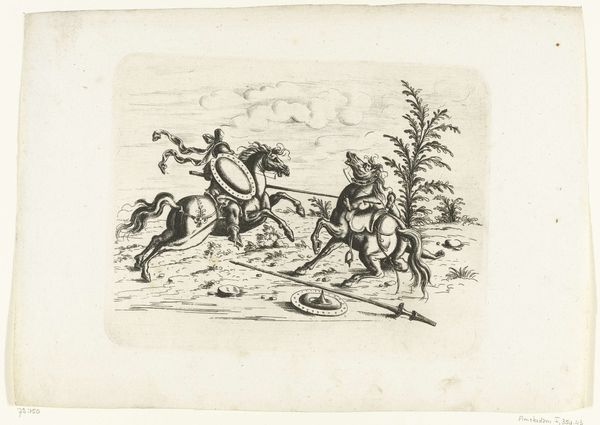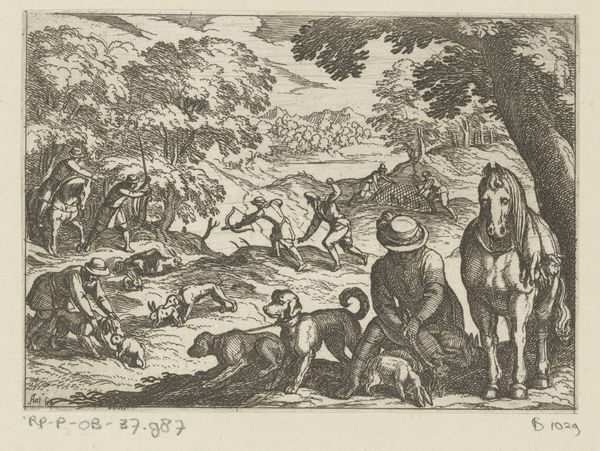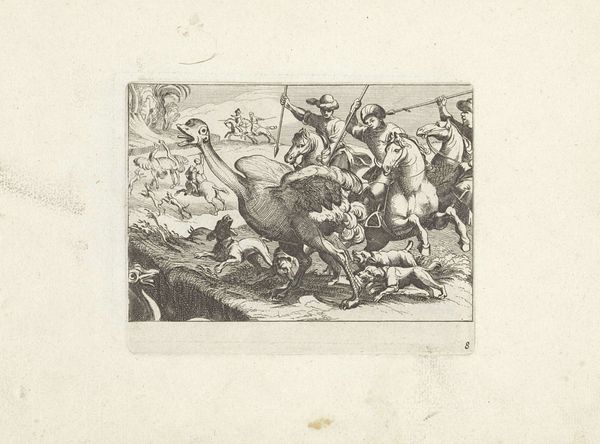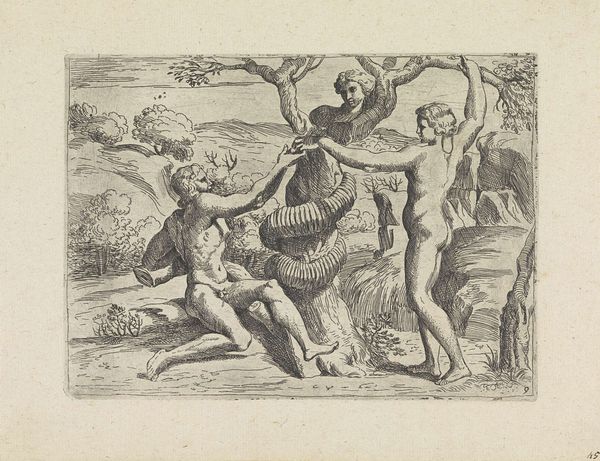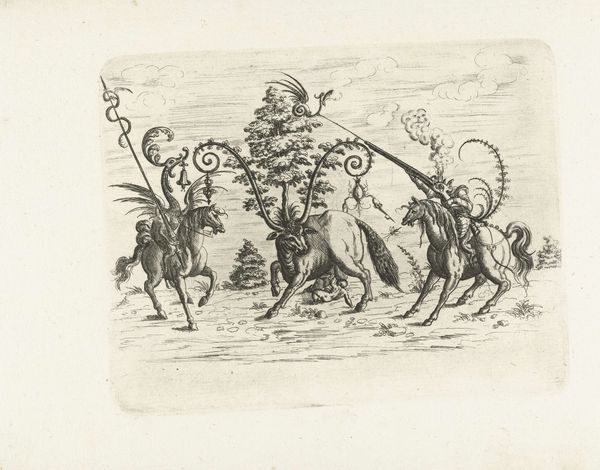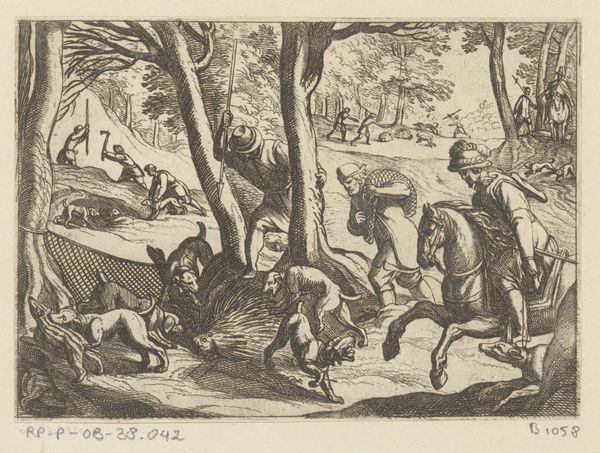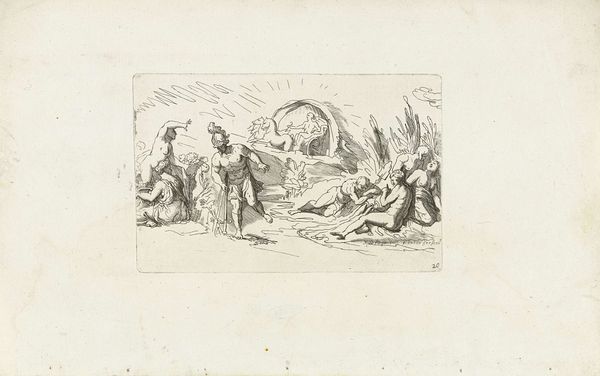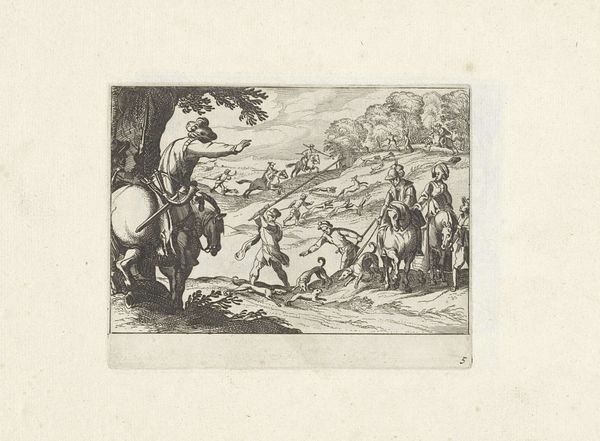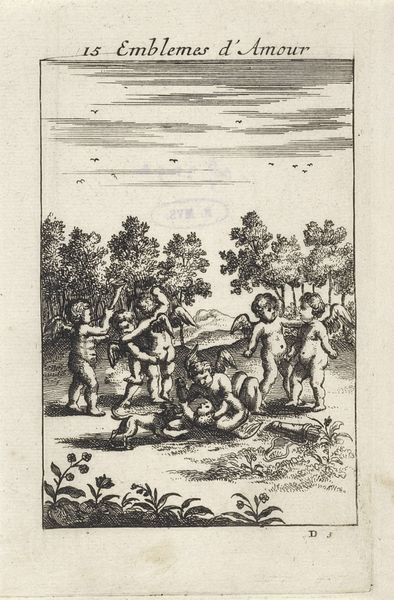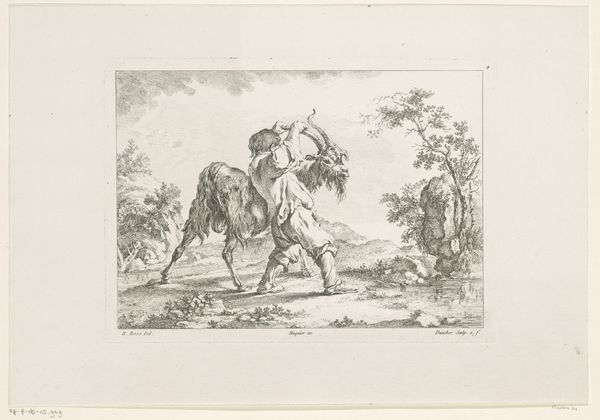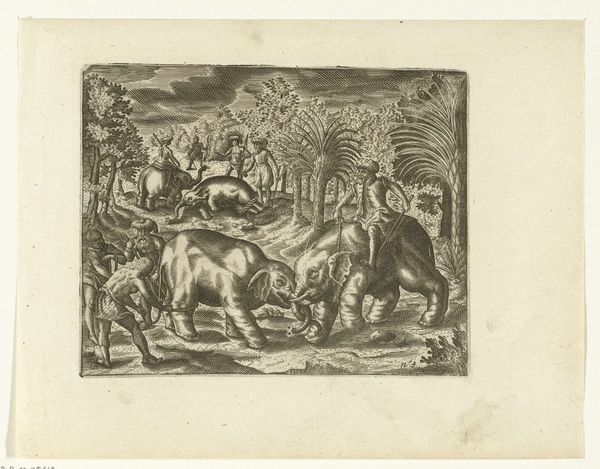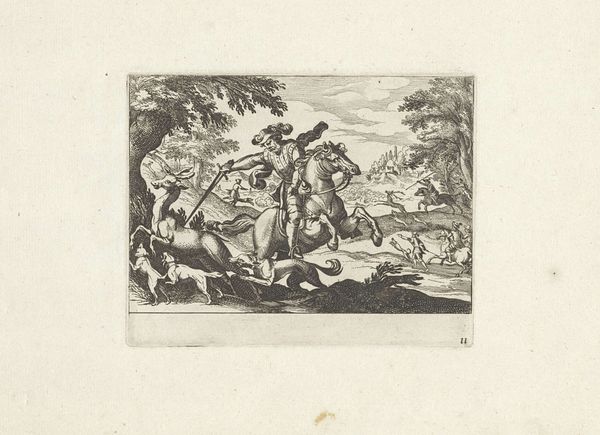
print, engraving
#
allegory
# print
#
landscape
#
figuration
#
11_renaissance
#
engraving
Dimensions: height 148 mm, width 189 mm
Copyright: Rijks Museum: Open Domain
Editor: Here we have Christoph Jamnitzer's "Landschap met vier putti," an engraving created sometime between 1573 and 1610. The image is populated by these playful cherubic figures in a sparse landscape, and I'm immediately struck by the seeming contrast between the idyllic scene and the rather serious expressions on the putti. What stands out to you about this piece? Curator: I’m interested in the way this engraving situates pleasure and perhaps even hedonism within a visually limited space. Notice how Jamnitzer uses the allegory of the putti – often associated with innocence and divine love – to subtly challenge prevailing social and religious norms around earthly enjoyment. Editor: Could you elaborate on that a little more? Curator: Well, consider the historical context. This was a period of significant religious and political upheaval, and images of carefree enjoyment, even those seemingly innocent, can be seen as subtle acts of resistance. The putti, playing music and existing in this space of leisure, become almost radical figures. What do you think of the relationship between freedom and constraints as manifested here? Editor: I guess I hadn't considered the implications of 'carefree' being, in its own way, a counter-narrative. Curator: Exactly! And we also need to ask, whose freedom are we talking about? During the Renaissance, artistic patronage often came from wealthy, powerful, predominantly male elites. How might their social standing influenced Jamnitzer’s visual language? We also cannot forget about whose bodies are represented and idealized and why! Editor: That's definitely a perspective shift for me, considering those complexities. There’s so much more to unpack than I initially realized. Curator: Indeed. Art invites us to continuously reassess our understanding, encouraging critical thought about power and representation throughout history. Editor: I see the artwork in a completely new light now!
Comments
No comments
Be the first to comment and join the conversation on the ultimate creative platform.
